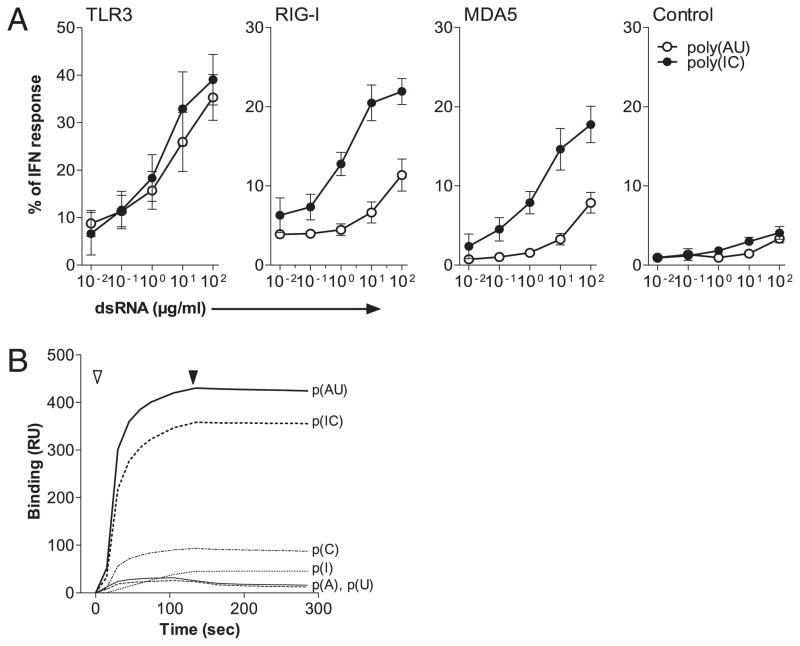FIGURE 1.
P(AU) and p(IC) show an identical potency for TLR3 engagement whereas only p(IC) triggers RLRs. A, A total of 4 × 105/ml human HEK293T cells stably expressing the pISRE-TA-luciferase plasmid were transfected with plasmids encoding human TLR3, RIG-I, or MDA5. Transfected or control HEK293T were stimulated with p(IC), p(AU), or with IFN-α (100 IU/ml), and luciferase activity was determined. Results were expressed as a ratio between stimulated and nonstimulated cells and normalized to IFN-α response. Data represent mean + SD of five independent experiments. B, p(AU) or p(IC) and control ssRNA poly(A), poly(U), poly(I), and poly(C) were injected onto rhTLR3-coated chip and analyzed on a Biacore T100 apparatus. Injection (open arrowhead) was performed for 120 s, followed by a dissociation period (filled arrowhead) of 180 s. Data are presented as one of three representative experiment. p(AU), poly(A:U); p(IC), poly(I:C).

